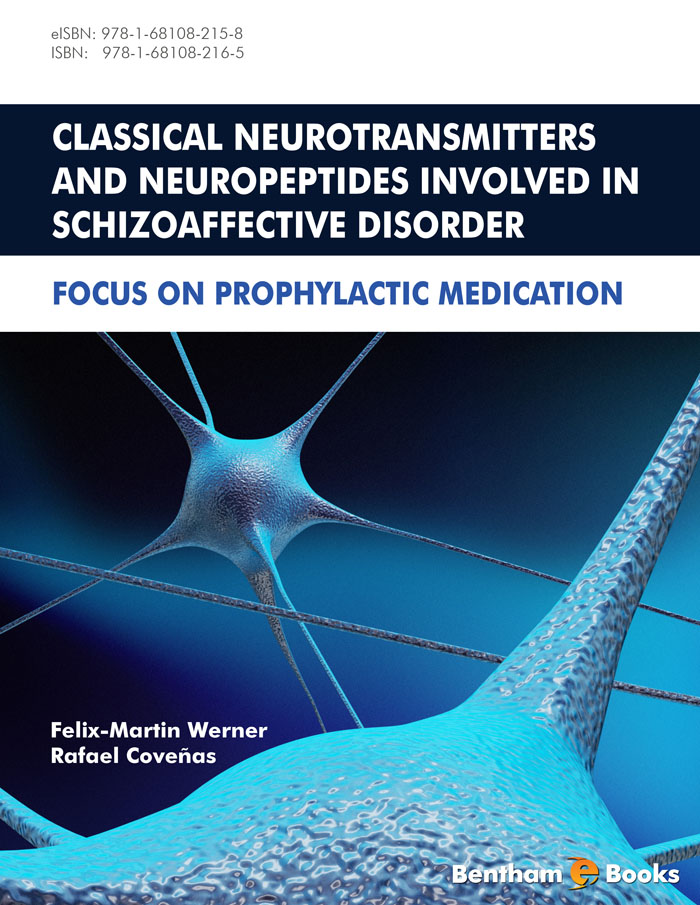Preface
Patients with a schizoaffective disorder are met regularly in the psychiatrist’s practice and in psychiatric wards. Schizophrenic and affective symptoms show a great variety and the courses of the disease can have different outcomes. For patients’ rehabilitation and social integration into the familiar and, in some cases working lives, a prophylactic medication is of great importance. Because we have been working on classical neurotransmitters and neuropeptides involved in schizophrenia and in affective diseases, we describe here the alterations of these neuroactive substances in the brain regions involved in the schizophrenic and affective symptoms. In that way, possibilities of finding new agents acting at specific receptors of classical neurotransmitters and neuropeptides are pointed out. The schizoaffective disorder, which has a prevalance of 0.5% in the population, is undoubtedly an inheritable disease with an environment-gene interaction. Some of the discovered susceptibility genes and the functions of the encoded neuroactive substances involved in the pathophysiology of the disease are pointed out. We have established the relationships between the hypothalamic-adrenal axis and the altered neural networks found in the brain areas involved in schizophrenic and affective symptoms. Because we have published several review articles about neural networks in schizophrenia and major depression, we extended here these neural networks to the brain regions involved in schizophrenic and affective symptoms. An essential chapter has been focused on the prophylactic medication. The different prophylactic medications consider the different forms of the disease. Besides, adverse effects and disease symptoms are mentioned, and the additional pharmacotherapies of these adverse effects and symptoms are mentioned, including the current availabe drugs. Some recently developed antipsychotic drugs such as lurasidone and cariprazine with a different mechanism of action are included as well. Patients’ well being is very important. Therefore, it is essential to choose an appropriate prophylactic drug and to support the patients’ adherence to the pharmacotherapy through psychoeducation and a social integration. Moreover, this e-book gives a hint to pharmaceutical firms to improve the prophylactic medication by presenting the specific subreceptors involved, on which new pharmacological agents could exert an improved or additional therapeutic effect.
ACKNOWLEDGEMENTS
The authors would like to thank Mr. Nikolas Skinner (University of Salamanca, Spain) for revising the English language
CONFLICT OF INTEREST
The authors declare that this ebook contents have no conflicts of interest.
Felix-Martin Werner
Euro Akademie Pößneck
Higher Vocational School for Elderly Care and Occupational Therapy
Carl-Gustav-Vogel-Str. 13
07381 Pößneck
Germany
E-mail: felixm-werner@versanet.de
Rafael Coveñas
University of Salamanca
Institute of Neurosciences of Castilla y León (INCYL)
Laboratory of Neuroanatomy of the Peptidergic Systems (Lab.14)
c/ Pintor Fernando Gallego, 1
37007-Salamanca
Spain
E-mail: covenas@usal.es

